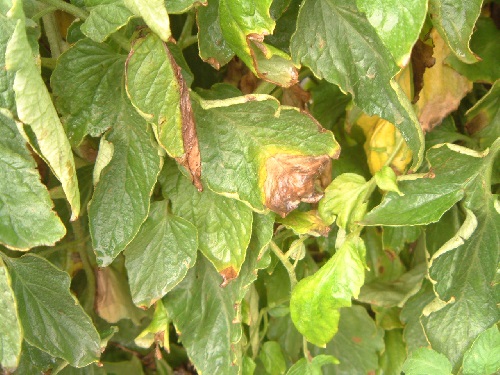Top 5 Diseases

Earlier this year, Florida Grower featured Florida’s top five insect pests. This month, we look at what many argue are the most troublesome diseases for citrus and vegetable growers in the state.
These diseases cause millions of dollars of damage each year in lost quality and yield. With each listing, UF/IFAS provides descriptions of the diseases’ potential threat to crops and what type of conditions favor the spread of the diseases.
Citrus Greening
It is no coincidence the citrus psyllid was listed among the top five pests. Identified in Florida in 1998, it is the vector of the deadly citrus greening disease that was first discovered in 2005. In a few short years, greening has spread to every commercial citrus-producing county in Florida. Some of the more dire estimates give Florida citrus less than five years to find a solution to greening, or the entire industry could be at risk. Because of this threat, growers and various groups have dedicated nearly $20 million focused on citrus disease research — an unprecedented amount of money.
Tomato Yellow Leaf Curl Virus
After being found in Florida in 1997, tomato yellow leaf curl virus (TYLCV) quickly became established and of economic importance to the state’s tomato growers. Early infection leads to severe stunting of the plant with virtually no yield at all. Hot, dry weather favors the vector, the whitefly, hence favoring the spread of the disease. While it is impossible to eradicate, TYLCV can be managed by using disease-free plants, rouging infected plants early in the season, and managing the whitefly with various insecticides. Rotation of whitefly-control chemistries is important to avoid resistance in the pest.
Phytophthora
Phytophthora capsici is a widely distributed disease, and it impacts a wide variety of crops. It can cause extensive losses, not only of pepper and summer squash, but also of eggplant and watermelon because of the rapidity of disease spread during favorable weather in Florida. Both foliage and fruit are susceptible in many crops. The disease spreads easily by a number of means, making field sanitation very important in disease management. In addition, preventative fungicide applications should be made to reduce the impact of the disease. Rotation of the fungicide’s mode of action is also important to avoid resistance.
Powdery Mildew
Powdery mildew is a serious threat to many crops in Florida, including beans, southern peas, okra, squash, cucumbers, muskmelons, honeydews, and pumpkins. It can spread easily in a variety of environmental conditions. Symptoms develop by spots that eventually appear to be talcum-like powder, which are spores that can be spread by the wind. In addition to resistance, economic control can be achieved with chemicals. Under low disease pressure, some materials applied for downy mildew control may give satisfactory control of powdery mildew. Under moderate to heavy mildew disease pressure, specific fungicides are recommended.
Citrus Canker
Before citrus greening was found, canker was Florida’s worst citrus disease. The state’s failed eradication effort destroyed millions of trees. To fresh fruit growers, canker is still a bane because its lesions make fruit unmarketable and restricts shipment. And in wet years, the disease can cause fruit drop in all citrus. Grapefruit, Mexican lime, and some early oranges are highly susceptible to canker; navel, pineapple, and hamlin oranges, as well as lemons and limes are moderately susceptible; mid-season oranges, valencias, tangors, tangelos, and other mandarin hybrids are less susceptible; and tangerines are tolerant.










